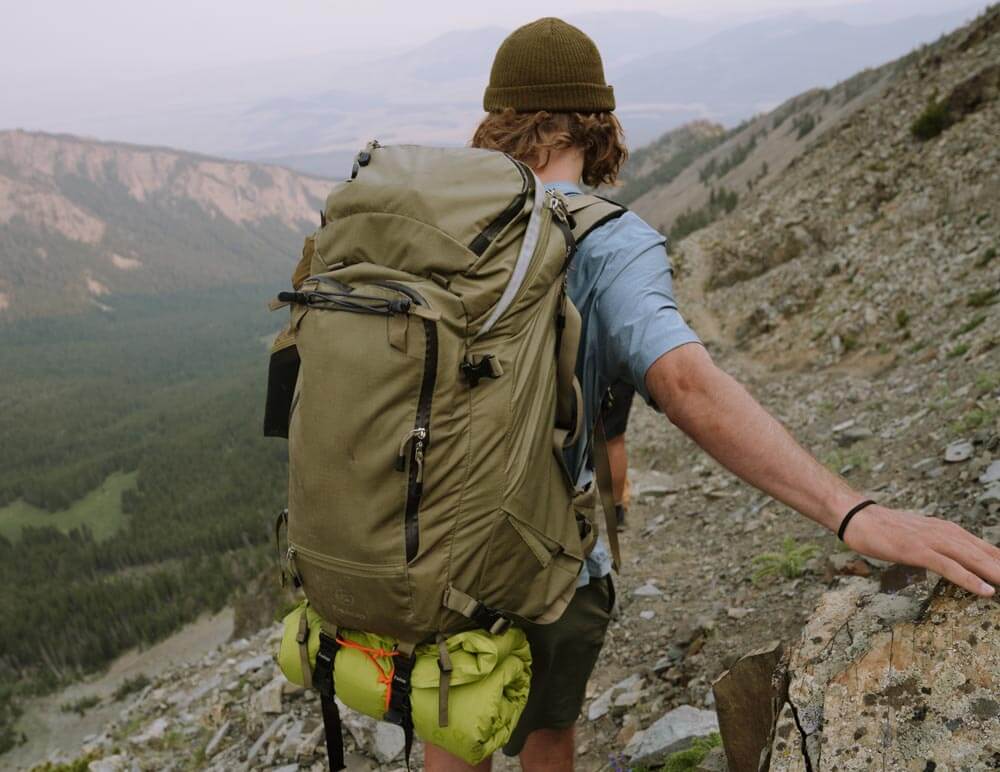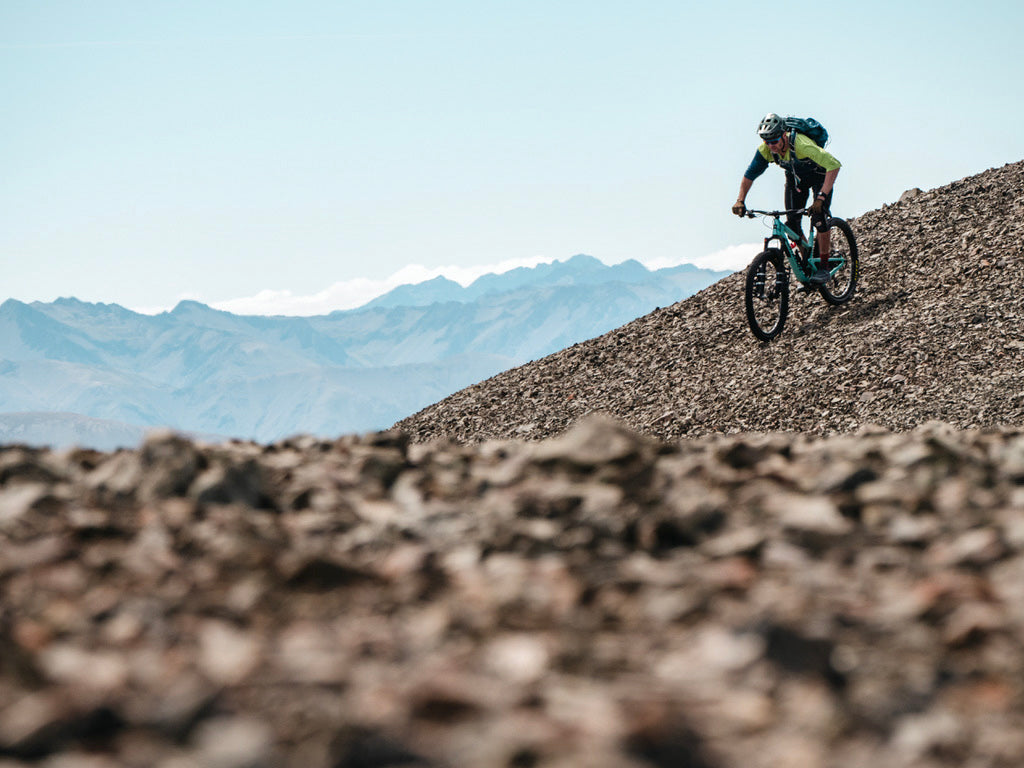Ultimate Backpacking Checklist

Are you planning a backpacking trip? A backpacking checklist is a must so that you don’t forget anything when you’re out in the wilderness. We’ve compiled a backpacking gear checklist so that you aren’t caught out in the elements without adequate protection. From maintained campsites to primitive backcountry camping, refer to this list of what to pack for backpacking on your next trip.
Permits and Access
Before you start your trip, familiarize yourself with your location’s fees and permits regulations, as well as access areas.
- Cash
- Identification
- Maps
- Permits, passes, and licenses

Backpack and Storage
Optimizing your backpack and storage space will be a critical part of an optimized trip. You’ll want a lightweight backpack that will minimize the amount of weight you are carrying to your campsite. Keep your backpack protected from the elements if you find yourself in non-ideal weather conditions.
- Lightweight backpack
- A backpack cover—many backpackers prefer to use trash bags that will help keep your backpack safe from the elements.
- Ziplock bags
- Water bladder, with the ability to carry at least 2–6 liters of water depending on conditions
Tools and Personal Gear
Stay safe throughout your trip with the right tools and personal gear to keep you going. As you become more experienced on the trail, some of this will become second nature, but no backpack checklist is complete without these items.
- Headlamp
- Flashlight
- Multitool
- Walking poles
- Phone
- Camera
- Powerbanks and extra batteries
- ID, cash, and insurance cards
Campsite and Area
Plan out your campsite or camping area before you head out. This will ensure you can get to and build your shelter before the sun goes down. Rules to know and essentials include:
- Tools to build a campfire like kindle, tinder, lighter, etc.
- Potable water location
- Nearest facilities, if provided
- Lights out time
- Rules regarding food storage and waste management
- Check out time
- Leave no trace principles
- Knowledge of local wildlife
Shelter System, Sleeping System and Bedding
Don’t forget shelter on your packing list for backpacking. Shelter and shade are an integral part of a safe excursion. Your shelter system should protect you from bad weather, bugs, and other wildlife. You’ll also want something that’s comfortable and will provide a good night’s rest to be ready for the day ahead.
- Backpacking tent or backpacking tarp
- Pillow
- Tent poles
- Stakes
- Groundsheet
- Sleeping bag
- Sleeping pad
- Blankets
Clothing and Footwear
Clothing needs to be lightweight, durable, and moisture-wicking. Wool is a great choice for keeping warm and dry. Try to avoid cotton as it takes much longer to dry.
- Rain jacket and pants
- Underwear
- Socks
- Fleece jacket
- Hiking pants
- Hiking shorts (depending on weather)
- Long-sleeve shirt for sun and bugs
- Short-sleeve shirts
- 2–4 pairs of underwear
- 2–4 pairs of socks (both hiking and wool)
- Gloves
- Base layers
- Sunglasses
- Hat
- Running shoes
- Hiking boots
- Sandals with back straps
- Camping shoes (for around the campsite)
Food and Water
Proper nutrition and hydration is a must. Remember to bring enough food and water to keep you going, while also having extras in case of an emergency.
- Average of 3,000 calories per person every day
- 2–4 liters of water per person every day
- Extra day’s worth of food
- Waterproof and bear proof food bag
- Water bladders and bottles
- Water purifier
- Wine or liquor in bladders or plastic bottles.
Cooking and Eating
Many campers prefer to get their calories outside of beef jerky and nuts, and a camp kitchen is the perfect solution to this. Eat a stick-to-your-ribs meal around the fire to refuel your body.
- Backpacking stoves and systems - Whether you’re boiling water in a minute, getting powerful heat from FluxRing Technology, or backpacking in harsh environments, Jetboil stoves endure anything you throw at them.
- Fuel
- Hard sided "Bear proof" canister for food
- Dishes, bowls, and eating utensils
- Camping Cookware - Jetboil’s camping pots, pans, and skillets are lightweight, compact, and easy to use.
- Biodegradable soap
Toiletries and Hygiene
Staying clean makes for a better backpacking trip overall. Don’t forget to pack these essential toiletries.
- Sunscreen
- Lip balm
- Toilet paper or wipes
- Toothbrush, toothpaste, and floss
- Bug repellant
- Eye drops
- Hair tyes
- Prescription medicines
- Hand sanitizer
- Menstrual products
- Digging trowel or shovel
- Contact lenses, solution, and glasses
- Sunglasses
- Nail clippers
Navigation and Maps
Don’t get lost when you’re backpacking. Navigation and maps will keep you safe and can help in emergency situations.
- Updated maps
- Compass
- Watch
- GPS phone app - If you won’t have service, download maps to your phone that you can access with no reception.
- Photos of guidebooks, maps, and trail pages
- Waterproof map bag
- Topography map
Medical and First Aid
Medical emergencies can happen at any time. Whether you experience a medical emergency or just need a bandaid, prioritize a good first aid kit with all necessary tools.
- Bear spray
- First aid kit
- Band-aids
- Gauze
- Antibiotic ointment
- Alcohol pads
- Latex gloves
- Tweezers
- Antihistamines
- Over-the-counter meds like ibuprofen, acetaminophen, and aspirin
Emergency and Signalling
Getting lost is not on your backpacking checklist, but emergency and signalling equipment should be. Use these items to cover your bases.
- Communication device such as a satellite tracker, or personal locator beacon (PLB)
- Extra batteries and power cords
- Water filter
- Whistle
- Stormproof matches
- Multiple lighters
- Super glue
- Small roll of duct tape
Games and Entertainment
An overnight backpacking list doesn’t just include safety equipment. You’ll want to make this trip fun, as well. While winding down in the evening, games and entertainment can be a great way to keep morale up, as well as keeping the kids in line if this is a family affair.
- Books or kindle
- Board games
- Headphones
- Crossword or sudoku puzzles
- Extra charging cables
- Deck of cards







